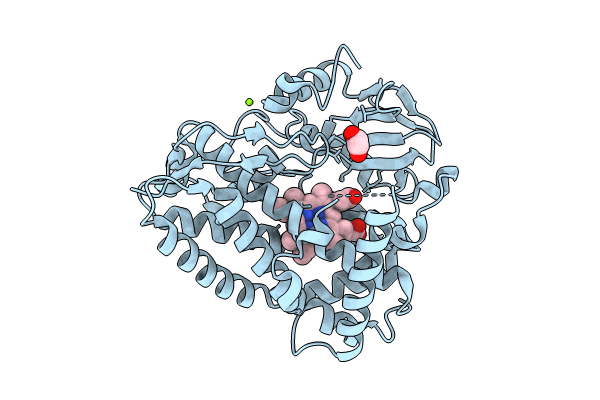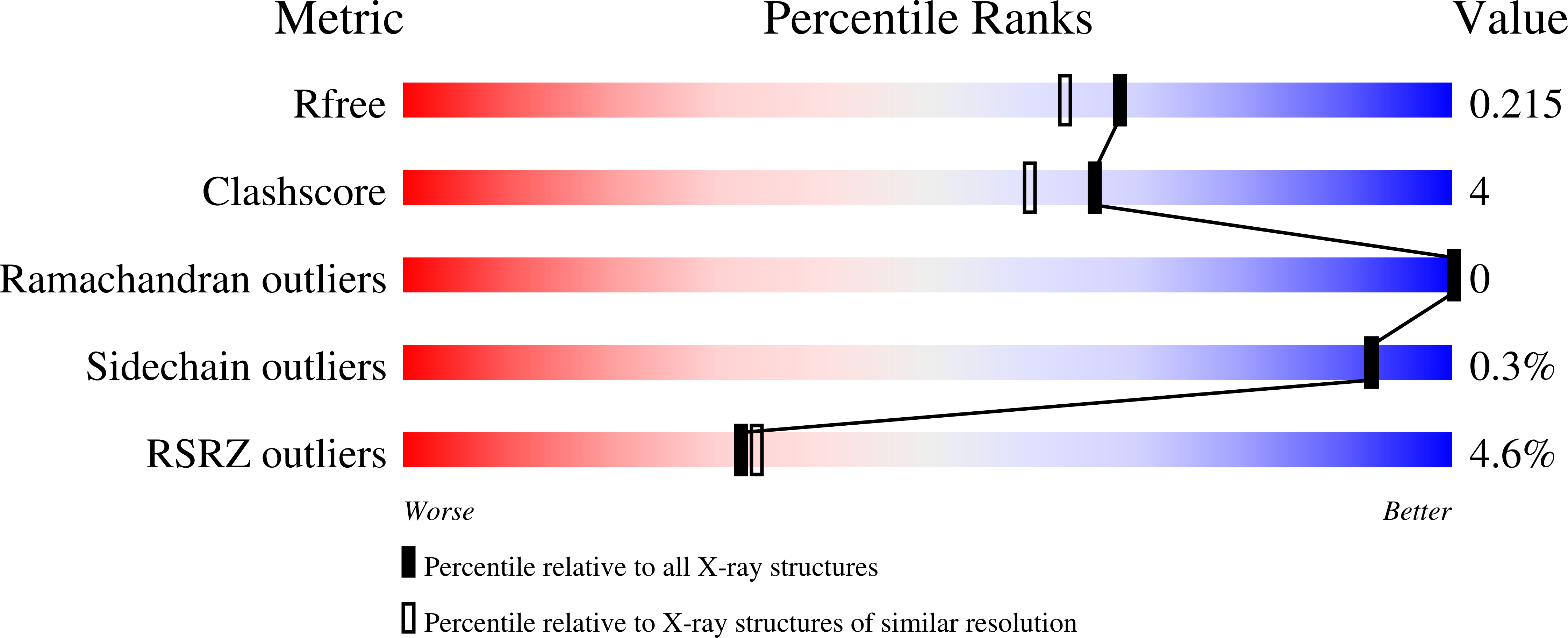
Deposition Date
2023-05-02
Release Date
2023-12-13
Last Version Date
2023-12-13
Entry Detail
PDB ID:
8SPC
Keywords:
Title:
Crystal structure of the cytochrome P450 enzyme RufO
Biological Source:
Source Organism:
Streptomyces atratus (Taxon ID: 1893)
Host Organism:
Method Details:
Experimental Method:
Resolution:
1.87 Å
R-Value Free:
0.21
R-Value Work:
0.19
R-Value Observed:
0.19
Space Group:
P 41 21 2


